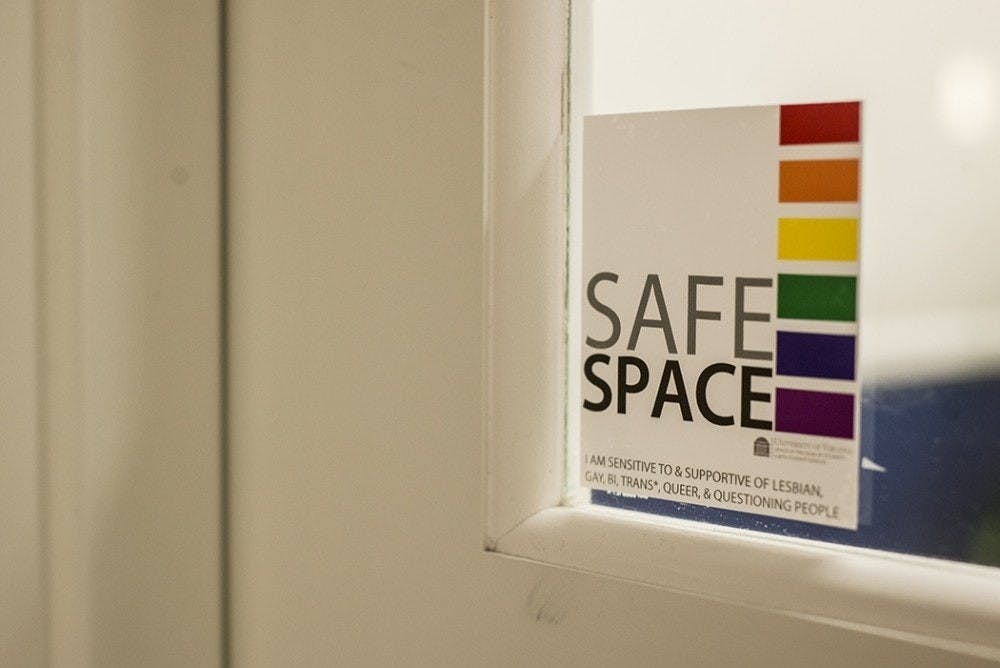There is a lot of talk among older people about how soft the current generation is — they say that we are too sensitive, we cannot handle criticism and that we will not survive in the “real world” where we will not be coddled through life. They point to the existence of safe spaces and trigger warnings as proof. This argument is an attempt to knock young people down a peg and paint empathy as a sign of weakness. In reality, saying that safe spaces and trigger warnings are used due to hypersensitivity oversimplifies the situation. These ideas exist to protect vulnerable and marginalized groups from the day-to-day challenges they face that are unique to their identities and experiences. Trigger warnings and safe spaces are simply displays of empathy, courtesy and respect for others.
A safe space is a space in which that people can enter to protect themselves from certain language or actions that may be traumatizing to them. The concept of safe spaces originated in the gay liberation movement in the 1960s, with the idea being that these spaces existed for queer people to be able to fully express themselves without fear from social or political repression. Around the same time, the women’s liberation movement also created safe spaces as a means to protect women from violence and to organize for political purposes.
Trigger warnings are notices given to another person when something that is being discussed could “trigger” emotional pain or trauma. This term was originally used in reference to victims of post-traumatic stress disorder. When they were reminded of their experiences or discussion turned to the traumatic event in question, they would experience flashbacks and deep emotional pain, as if they were reliving the event that caused their PTSD.
The purpose of a safe space is not to protect some theoretical arrogant college student from having their views challenged, as is argued by conservatives. The purpose is to protect vulnerable people from the violence and suppression we are subjected to every day. Speaking from my own perspective as a gay man, there are very few places where people like me can express ourselves safely. Many queer people are not able to be themselves in public out of fear of violence. Some cannot even be themselves at home out of fear that their families will not respond well to it. When we are not safe anywhere, even in our own homes, we need spaces where we know we will be comfortable enough to properly express ourselves. We recognize that these spaces are not airtight — due to our identities, there is a limit to the sense of safety we feel in public. Even in spaces designed to protect us, we do not feel completely safe, which is something we as human beings should be entitled to.
Though our spaces are sometimes not completely safe for us, these spaces are necessary to at least help us feel safe. It is unfair to ask us to subject ourselves day in and day out to suppression and prejudice that many people will never be able to fully empathize with. If individuals want to retain their rights to call us slurs and threaten violence against minority groups, we should at the very least be entitled to a space where we are not subjected to such threats and violence.
Trigger warnings, like safe spaces, are not implemented to shelter young liberals from talking about difficult subjects or having their views challenged. Trigger warnings are implemented out of common decency and respect for another person’s identity or experiences. PTSD is a very real and difficult disorder to live with, and it is very easy for a person suffering from this disorder to be reminded of their trauma and fall back into the extreme negative emotions felt as a result of their trauma. If a person has been raped, they have experienced an extremely severe form of trauma and have every right to be sensitive to the topic. Is it not simply common courtesy to make someone aware that the upcoming conversational topic might be difficult for them to talk about? In my mind, warning someone that their trauma could flare up again due to certain content is simply showing respect to the needs of that person.
Conservatives claim that we do not have trigger warnings in “the real world” but this claim is false. Movie ratings tell people how appropriate films are for certain viewers to watch. If anyone wants to expose their seven-year-old child to films like “A Clockwork Orange”, “Cannibal Holocaust”, or “The Human Centipede” to “own the libs,” I suppose that is their right. However, parents are still provided with the knowledge to prevent possible traumatization.
This entire debate has been blown completely out of proportion. It is right and just for a society to want to be courteous and accommodating to vulnerable and marginalized members. There is nothing wrong with issuing a warning before graphic or potentially traumatic content is discussed or shared, and there is nothing wrong with creating a space where people can safely express themselves without being subjected to prejudice and violence. Safe spaces and trigger warnings are simply extensions of common courtesy and respect for the existence and experiences of people who are different, and strong opposition to either shows a lack of empathy for vulnerable populations.
Chris Hopkins is an Opinion Columnist for The Cavalier Daily. He can be reached at opinion@cavalierdaily.com.







